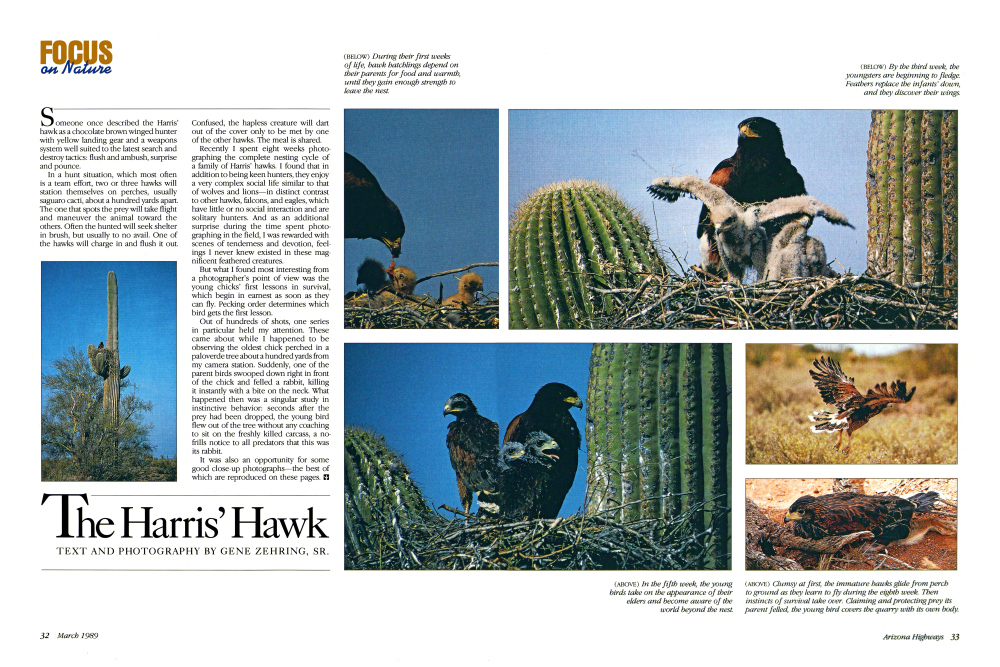Focus on Nature: The Harris' Hawk

FOCUS on Nature
Someone once described the Harris' hawk as a chocolate brown winged hunter with yellow landing gear and a weapons system well suited to the latest search and destroy tactics: flush and ambush, surprise and pounce.
In a hunt situation, which most often is a team effort, two or three hawks will station themselves on perches, usually saguaro cacti, about a hundred yards apart. The one that spots the prey will take flight and maneuver the animal toward the others. Often the hunted will seek shelter in brush, but usually to no avail. One of the hawks will charge in and flush it out.
Confused, the hapless creature will dart out of the cover only to be met by one of the other hawks. The meal is shared.
Recently I spent eight weeks photographing the complete nesting cycle of a family of Harris' hawks. I found that in addition to being keen hunters, they enjoy a very complex social life similar to that of wolves and lions-in distinct contrast to other hawks, falcons, and eagles, which have little or no social interaction and are solitary hunters. And as an additional surprise during the time spent photographing in the field, I was rewarded with scenes of tenderness and devotion, feelings I never knew existed in these magnificent feathered creatures.
But what I found most interesting from a photographer's point of view was the young chicks' first lessons in survival, which begin in earnest as soon as they can fly. Pecking order determines which bird gets the first lesson.
Out of hundreds of shots, one series in particular held my attention. These came about while I happened to be observing the oldest chick perched in a paloverde tree about a hundred yards from my camera station. Suddenly, one of the parent birds swooped down right in front of the chick and felled a rabbit, killing it instantly with a bite on the neck. What happened then was a singular study in instinctive behavior: seconds after the prey had been dropped, the young bird flew out of the tree without any coaching to sit on the freshly killed carcass, a nofrills notice to all predators that this was its rabbit. It was also an opportunity for some good close-up photographsbest of which are reproduced on these pages.
The Harris' Hawk
TEXT AND PHOTOGRAPHY BY GENE ZEHRING, SR.
(BELOW) By the third week, the youngsters are beginning to fledge. Feathers replace the infants' down, and they discover their wings.
Already a member? Login ».